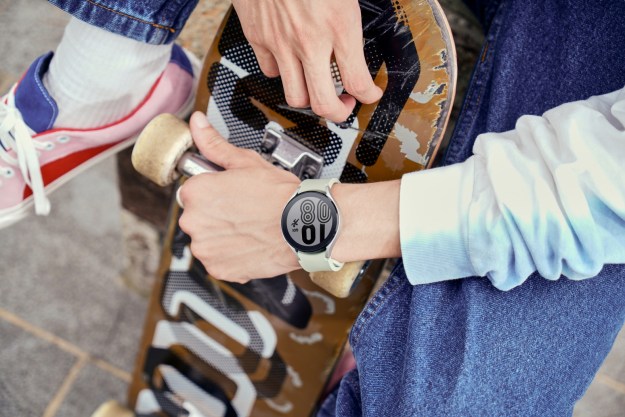At first glance, the Vuzix Blade AR Smart Glasses resemble your standard pair of sunglasses. But underneath the cool exterior is most everything we remember in Google Glass — the ability to project information in your field of view, internet connectivity, and a built-in camera for capturing images and video. You won’t need a smartphone glued to your face — all your Facebook, Instagram, and Twitter notifications are piped into your field of view.
“Directions, menus, weather, events, stocks, video conferencing, sports updates, social feeds, bio-metrics, and more, right in front of you, literally,” the company said in a statement. “AR smart glasses that right out of the box provide hands-free access to all the alerts from your phone, while allowing you to leave your phone in your pocket.”
Here’s what we know about the Blade AR Smart Glasses:
| Displays: | 2x Cobra II digital light processing displays Full-color AR overlays Transparent, photochromic Prescription inserts are available Multiple lens color choice Standard UV protection |
| Processor: | Quad-core ARM-based chip |
| Memory: | Unknown |
| Storage: | Unknown |
| Camera: | 8MP supporting 1080p video |
| Connectivity: | Wireless AC Bluetooth |
| Ports: | 1x Micro SD 1x Micro USB (audio, recharging) |
| Input: | Noise-canceling microphones (voice input) Touchpad with gesture support (right arm) Head motion tracking sensors |
| Output: | Dual haptic feedback |
| Batteries: | Internal LiPo rechargable |
| OS: | Android |
| Weight: | Less than 3 ounces |
| Cost: | Final product — unknown Developer kit — $495 deposit |
| Availability: | Unknown |
The Blade AR Smart Glasses were originally designed for enterprise use as an attractive alternative to the company’s more expensive (and more robotic-looking) M100 and M300 models. The version hitting store shelves appears to be identical hardware-wise, but its ecosystem will focus on social platforms and mainstream services rather than enterprise-focused applications.
“For consumers, the Vuzix Blade is the perfect companion to your Android or iOS smartphone, allowing users to always be connected, stay informed, and never miss a photo shot,” the company said. “The Vuzix Blade’s companion app will allow users to seamlessly pair their Vuzix Blade Smart Glasses to their
Given the Blade is powered by Android, the platform will be open to all developers. These apps and services will appear in a built-in App Store, although Vuzix doesn’t say if the Blade Smart Glasses will directly support Google Play Store apps, or if users can sideload Play apps into the local
Vuzix is taking $495 reservations for a developer kit consisting of the company’s development software, a preproduction design verification testing unit, and a production unit. The release date and price of the actual retail version are not yet known.
Editors' Recommendations
- The 6 biggest iOS 17 features that Apple stole from Android
- Switching from iOS to an Android phone just got way more convenient
- The best work-from-home apps for Android and iOS
- The best home design apps for Android and iOS
- Internal iOS 13 code spills beans about new Apple AR headset


